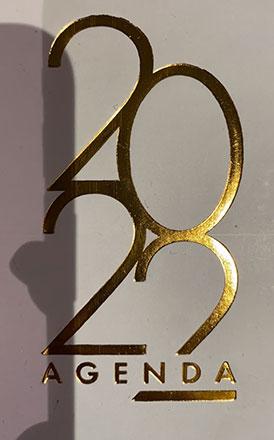You are here
The secrets of building successful habits
By Dina Halaseh , Family Flavours - Feb 26,2023 - Last updated at Feb 26,2023

Photo courtesy of Family Flavours magazine
By Dina Halaseh
Educational Psychologist
Have you been setting your goals and failing at many of them year after year? Here are some tried and tested, ultimate habit building tricks for you!
According to author James Clear, atomic habits are small and easy to practice to become part of your routine these habits eventually turn into a source of power.
Change and growth
The main idea lies in the concept that doing a simple task regularly until it becomes systematic will result in compound growth. Even though a habit may seem small or insignificant, it will result in remarkable change over time and compounded growth. As you can probably tell by now, it’s not about the habit itself, rather about the systems built around it. If you wish to achieve growth, forget about setting goals and focus on building the right systems that help you focus on who you want to become. In the same way small habits build a growth system, bad habits build systems that unfortunately weigh you down. In order to break these bad habits, we need to change the system behind them.
There are four main laws of behavioural change. These are the main concepts we can focus on to build better systems and habits.
Making it obvious
In order to help you build better habits, make the chosen habit obvious around you. For example, if one of your new year’s goals this year is to focus on reading to help nourish your mind, you can do that by stacking habits one on top of the other. Think of the following rule: “After I… I will… “So, after I drink my coffee, I will read 2 pages.”
For a bad habit, we would do the absolute opposite and make it invisible. If you wish to cut down on sugar to help maintain a healthier lifestyle, you can make sure to not buy any chocolate that might cause you to feel weak or test your ability to say no when confronted with it.
The main idea is to try to avoid the temptation rather than resisting it.
Making it attractive
The second rule is easy; you need to ensure the new habit is attractive. A trick that can help you start a habit you might be dreading is to do something you enjoy just before attempting a difficult habit. Another trick is to surround yourself with an environment that supports building that habit. For example, to start reading, you can join a book club, connect with friends who read or join cultures that support reading.
For parents, helping your child see a habit as attractive would be to first model that behaviour and second, to offer options and choices to ensure autonomy.
Making it easy
An easy habit is more likely to be practiced than a hard one, so in order to make the system work, try to simplify the habit as much as you can so you don’t feel like it’s a lot of work.
Author Clear explains the “law of least effort”; creating environmental changes that make that habit as easy as possible. You can start a new habit using the two-minute rule. Any new habit should only take two minutes to do. Do it daily and regularly until it becomes a regular habit then add another two-minute practice and build up the habit from small practices to a strong habit.
Technology plays a huge role here; if you can use technology to make a habit easier, then take advantage of it. This can be as simple as automating a bank operation to set a little bit of money aside as a savings account.
To break a bad habit, try to think of ways to make the habit seem difficult, the harder it is, the less likely you are to do it.
Making it satisfactory
Reward is something that motivates most of us; having that sense of achievement on its own might be the reward needed when focusing on a new habit. The change that happens automatically with time will be another reward as well. To do that, focus on small successes and praise yourself for your small accomplishments.
Focus on changing one per cent every day; this will ultimately result in atomic change. There is no need to change everything at once, or even be twice as better as yesterday. Only ensure you are changing 1 per cent at a time. If you change this one per cent every day, you will end up being better by 37 per cent by the end of the year!
So, before you set your goals this year, consider what systems need to be in place and what can be changed to ensure building better habits.
Reprinted with permission from Family Flavours magazine
Related Articles
By Michelle WashingtonA plant-based diet may have seemed extreme years ago, but today it’s all the rage — and for good reason.
Getting teens to put down their phones when they get behind the wheel is no easy task, but a small study suggests that parents may have more
AMMAN — Experts shared their best advice for building positive habits that will stick through 2022. “Habits have a significant impact o














